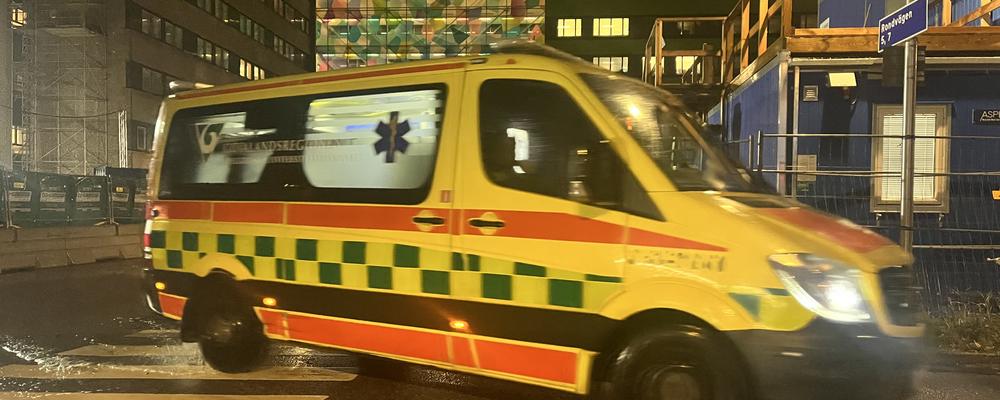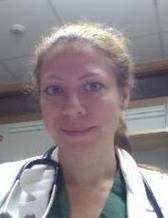
- Home
- News and events
- Find news
- More lives could be saved if ambulance staff receive AI assistance
More lives could be saved if ambulance staff receive AI assistance
More lives could be saved if ambulance staff were to receive AI assistance with assessing how seriously injured people are, and where they should be taken. These are the findings of a study that examined several different mathematical models as potential decision-making tools.
Researchers at Chalmers University of Technology, the University of Gothenburg, and the University of Borås are responsible for the study, which was published in BMC Medical Informatics and Decision Making. The study is based on data regarding adults who came into contact with Swedish ambulance services between 2013 and 2020.
The study includes more than 47,000 incidents from the Swedish Trauma Registry, which also shows where people were taken to. After weighing together variables such as respiratory rate, injury type, blood pressure, age and gender, all AI models were found to perform better than the clinical outcome, i.e. the decisions regarding transport that were made by ambulance staff at the incidents.

Eva-Corina Caragounis, researcher in trauma surgery at Sahlgrenska Academy at the University of Gothenburg and senior physician and surgeon at Sahlgrenska University Hospital, was the co-author of and medical expert for the study.
“Prehospital assessment of an injured patient, before they arrive at the hospital, will always present a challenge. Staff are working in an impractical environment, under time pressure, with little information, and have to make decisions about the patient’s condition, which is dynamic and can change quickly,” she says.
Seriously injured people in the wrong place
The study shows that 40 per cent of seriously injured patients were not taken directly to a university hospital. At the same time, 45 per cent of people who were not seriously injured were sent to university hospitals with injuries that could have been treated at another emergency hospital.
The first author and corresponding study author is Anna Bakidou, doctoral student and member of the Care@Distance – Remote and Prehospital Digital Health research team at the Department of Electrical Engineering, Chalmers University of Technology.
“Seriously injured people are more likely to survive if they’re taken straight to a university hospital, as such hospitals have the resources to deal with all types of injuries. That’s why we need to be able to tell more accurately who is seriously injured and who isn’t, so that everybody gets the right care and resources are used as effectively as possible,” she says.
“We hope that a more objective decision support tool can work along the lines of an additional colleague, helping staff to see more complex links and give extra thought to approaches in cases where injuries can be difficult to perceive or assess,” continues Anna Bakidou.
By way of example, she mentions how younger people involved in road accidents are often assessed as being more seriously injured than they actually are, while older people who fall are assessed as being only slightly injured even though their condition may suddenly become life-threatening due to internal bleeding.
Validation and coordination required
Although mathematical models could potentially save lives, a lot of work remains to be done before ambulance staff can use the technology. Finding ways of getting all the data into the AI tool quickly and easily, and ensuring that the service can interact with users, is a crucial step.
Can you talk to the tool so that you keep both hands free, for instance? How can existing procedures and protocols be used to work with the AI, and how can recommendations to staff be updated as new data are added? We need to test such things and take them into account as we move forward with more studies and prototype work,” says Anna Bakidou.
Large-scale clinical trials will also be required over time before AI services can become part of the day-to-day lives of ambulance staff. Stefan Candefjord is a docent at the Department of Electrical Engineering at Chalmers University of Technology, and the last author:
“The regulations mean it all take times, and people are afraid of AI, too. Serious consequences may result if things go wrong. Everything that has to be introduced in healthcare must be validated. That said, we know that some of the methods used at present aren’t always the best,” he says.
“There’s not much research into AI when it comes to ambulance care, and we hope our mathematical models will be able to contribute with assistance that’s adapted to the work environment and ultimately provide more equal care.”
Eva-Corina Caragounis also emphasises the importance of coordinating future AI assistance in respect of ambulance care with hospital care.
“If the models had been used as a basis when deciding on where to take patients, patients with less serious injuries would be taken to emergency hospitals and more severely injured patients would go to university hospitals. But when developing tools for prehospital patient sorting, it’s important for them to go hand in hand with an organisation that both prehospital units and the hospitals involved agree on,” she concludes.